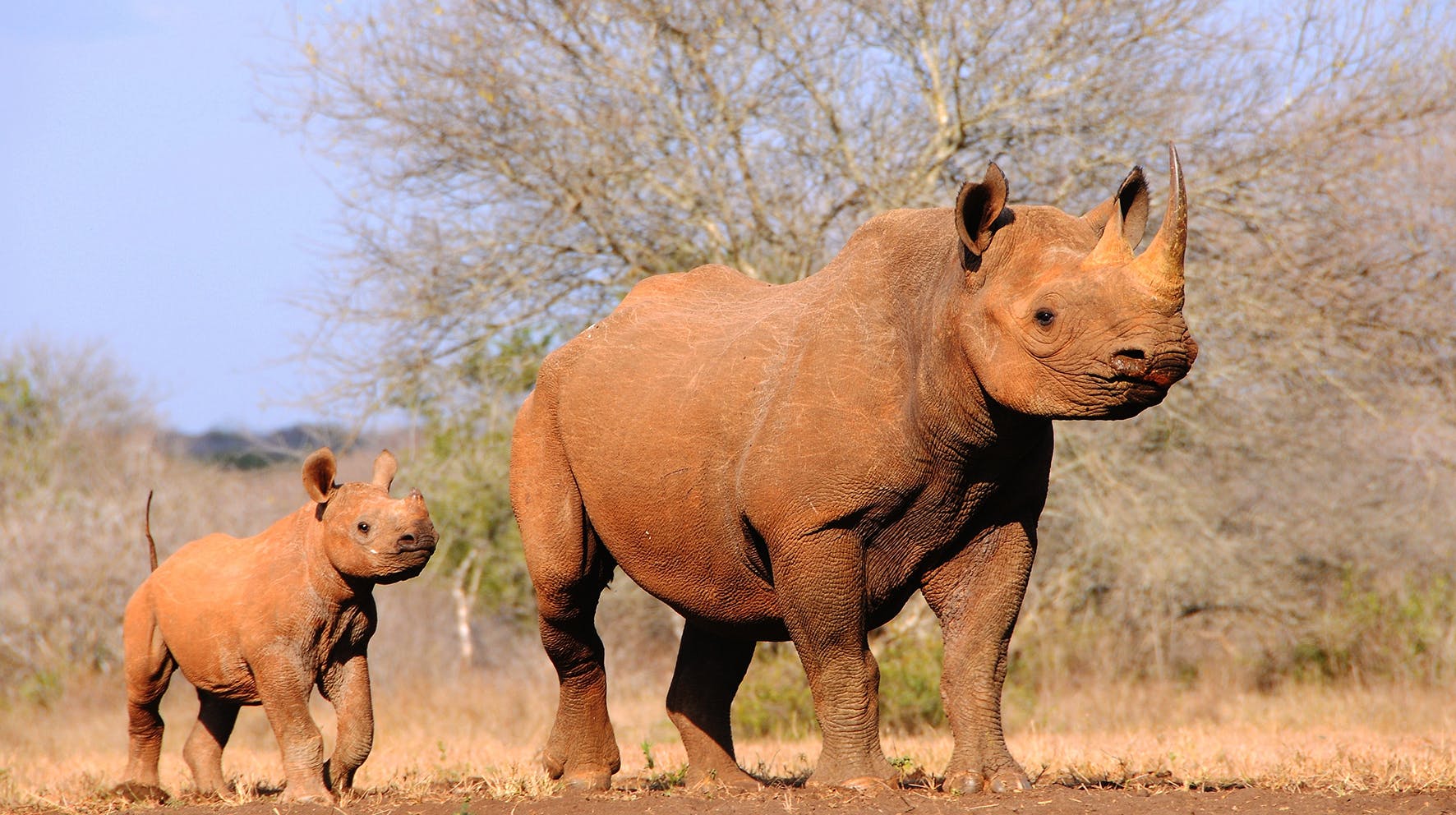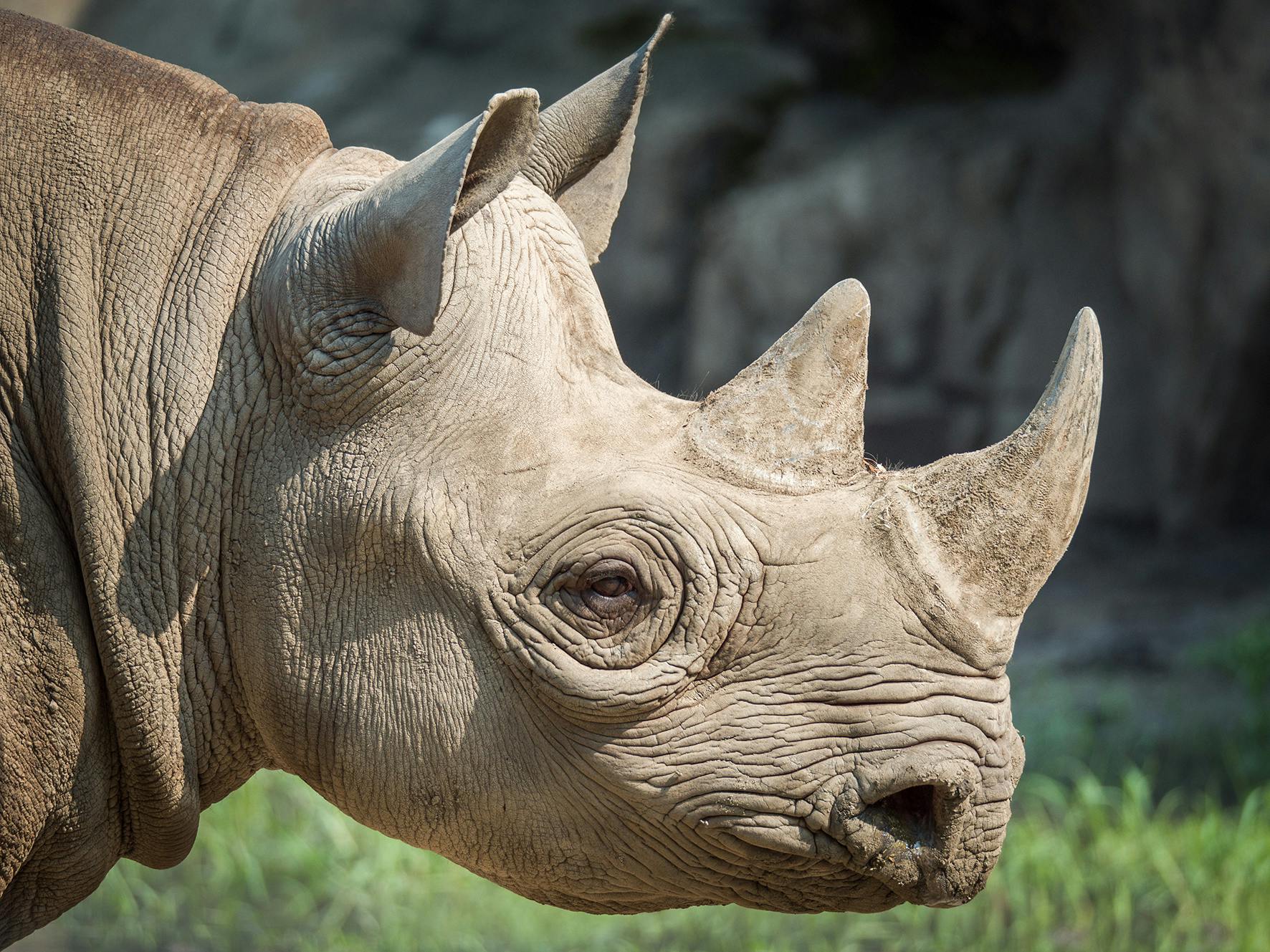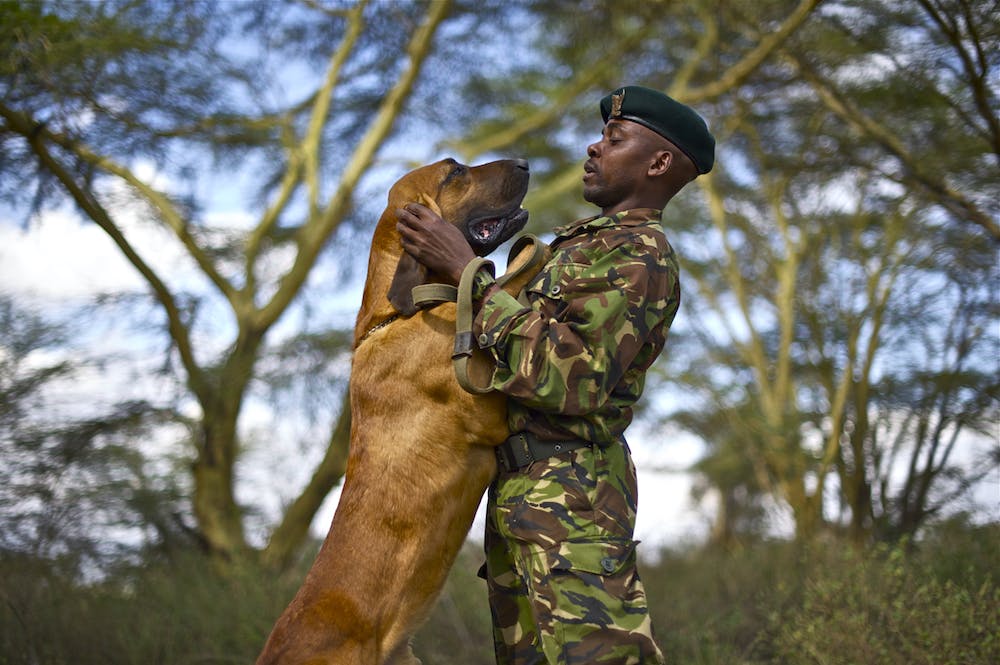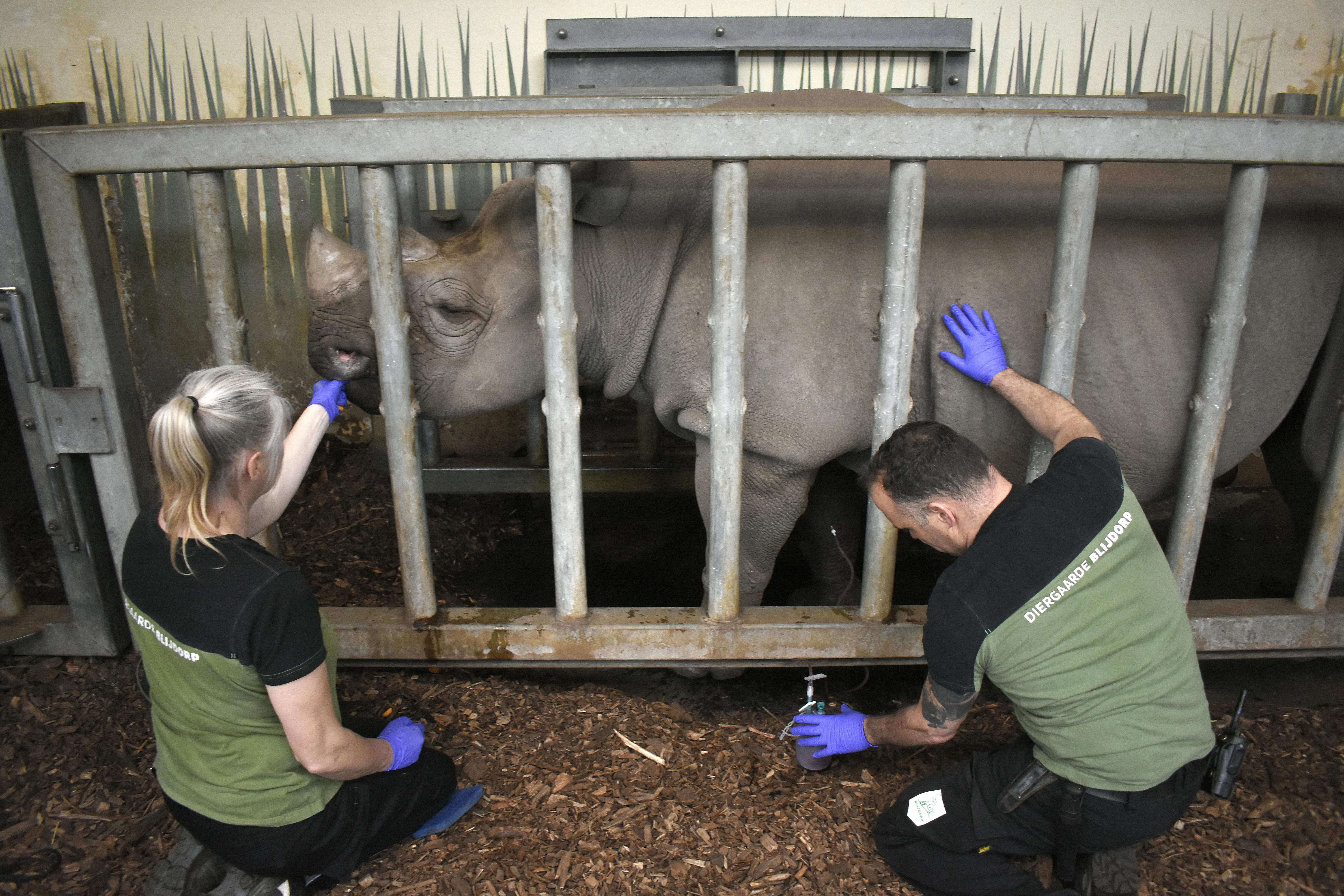
The eastern black rhinoceros is one of the largest animals in Africa. Its impressive horns and top speed of up to 55 kilometres per hour keep most predators at bay. However, these horns are one of the main reasons why the number of rhinos has declined sharply over the past century. That is why Rotterdam Zoo is helping to protect this critically endangered ungulate from extinction.
Diceros bicornis michaeli

± 45 years
± 1.6 metres
2.9 - 3.75 metres
800 - 1,300 kilograms
The eastern black rhino can be recognised by the two horns on its head and its large, grey-brown body. The name “black rhino” is therefore somewhat misleading. The Dutch colonists who first saw that there were two species of rhino living in South Africa called one the “wide” rhino, because of the shape of its mouth. The English colonists who arrived later understood this as “white” and therefore called the other species “black” as a counterpart.
Black rhinos have a more pointed lip than white rhinos, are slightly smaller and hold their heads higher when walking. Like all other rhinos, black rhinos have three hooves on their legs, which are strong enough to run short distances.
The eastern black rhino is found in Kenya and Tanzania. A population has also been released in Rwanda. In the past, this subspecies also occurred further north, as far north as the southern border of Egypt. Eastern black rhinos live mostly on savannas and shrublands, with enough leafy plants to eat.

Like all rhinos, the eastern black rhino is a herbivore. It uses its flexible, pointed upper lip to grasp branches and leaves. The black rhinoceros has no front teeth or canines, but it does have flat molars that help it digest hard plant material. It feeds on more than 200 different types of plants, including shrubs and low trees. This also distinguishes them from white rhinoceroses, which mainly eat grass.
At Rotterdam Zoo, the black rhinos are fed branches and rose petals, which the keepers place in food cages.

Eastern black rhinos are generally solitary animals. This means that they prefer to live alone. They only come into each other's vicinity when they want to mate.
Because black rhinos live solitarily, the rhino enclosure at Rotterdam Zoo is divided into three sections, and the keepers can open the doors to give the rhinos access to different areas.

Black rhinos do not have a fixed mating season. Rhinos can come together to mate at any time of the year. These encounters are often violent: males use their horns to fight for females. Rhinos sometimes injure each other so badly that they succumb to their injuries. A sensible rhino therefore prefers to stay away from larger males.
After mating, the male and female go their separate ways. The male plays no role in raising the young.

Black rhinos have one of the longest gestation periods of any mammal: around 15 to 16 months. At birth, a calf can weigh up to 45 kilograms! Nevertheless, the calf stays close to their mother, who protects them from hyenas, lions and other rhinos. The calf usually stays with their mother for about two to four years, until she is ready to raise a new calf. Then she sends them away to stand on their own hooves.

Adult black rhinos have little to fear from predators. They are too large, heavy and dangerous for even the largest predators to attack. Lions and hyenas sometimes attack young, sick or old animals.

In many Asian countries, rhino horns are believed to have healing powers. However, the horn is made of keratin, the same substance that makes up our nails and hair. It therefore has no medicinal properties. Nevertheless, the horns fetch high prices on Asian markets. In the protected nature reserves where rhinos live, violent, well-organised poaching gangs are increasingly coming to shoot rhinos and take their horns.
The eastern black rhino is currently classified as “Critically Endangered” in the wild. Protecting these giants and their habitats is essential to preserving the black rhino.

To protect eastern black rhinos in the wild, Rotterdam Zoo supports the Save The Rhino Foundation. This organisation is committed to the global conservation of rhinos and their habitat. One of their initiatives is the Rhino Dog Squad in Kenya, a specially trained team of dogs to track down poachers and illegal goods, such as horns. These sniffer dogs not only protect rhinos, but also the local population against crime. Thanks to this team of dogs, the number of rhinos poached has fallen sharply.

Tracking dogs are not the only way to track rhinos. Smart Parks develops transmitters for the horns, which record the movements of rhinos. The signals transmitted by the transmitters allow rangers to see whether the rhino is calmly eating, for example, or whether it is panicking. This enables rangers to intervene when poachers are lurking. To record the normal movements of the black rhino, the developers at Smart Parks are testing their transmitters on the horns of rhinos at Rotterdam Zoo. This data will enable them to further improve their transmitters before deploying them in the wild.

Black rhinos in zoos often suffer from excessive iron levels in their blood. This can damage their reproductive organs. That is why Rotterdam Zoo is working with colleges, universities and other zoos to find the cause of this problem. Our keepers train the black rhinos to remain calm during blood sampling. This allows us to collect a lot of relevant data about their blood and iron levels!

Rotterdam Zoo participates in the European population management programme for the eastern black rhinoceros. Based on the pedigree of rhinos in zoos, the coordinator determines which animals are best paired with each other to produce healthy offspring. These young animals are then moved to other zoos to form the next generation. In this way, we are building up a healthy population as a back-up for the wild animals, with the ultimate goal of returning rhinos to their natural habitat when conditions there are favourable.

